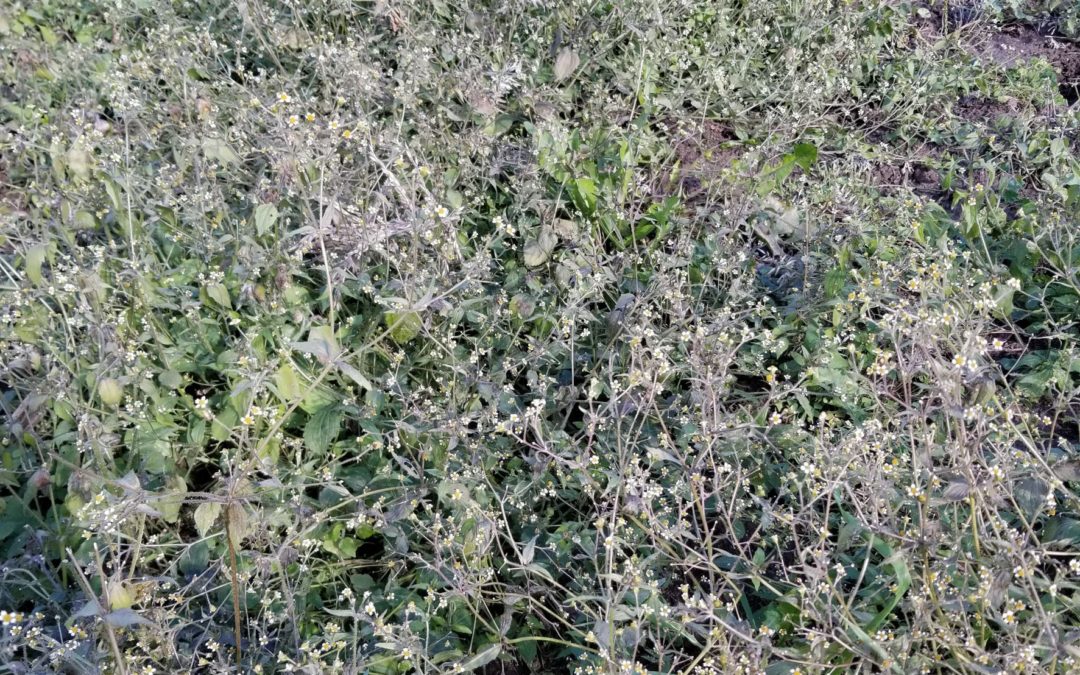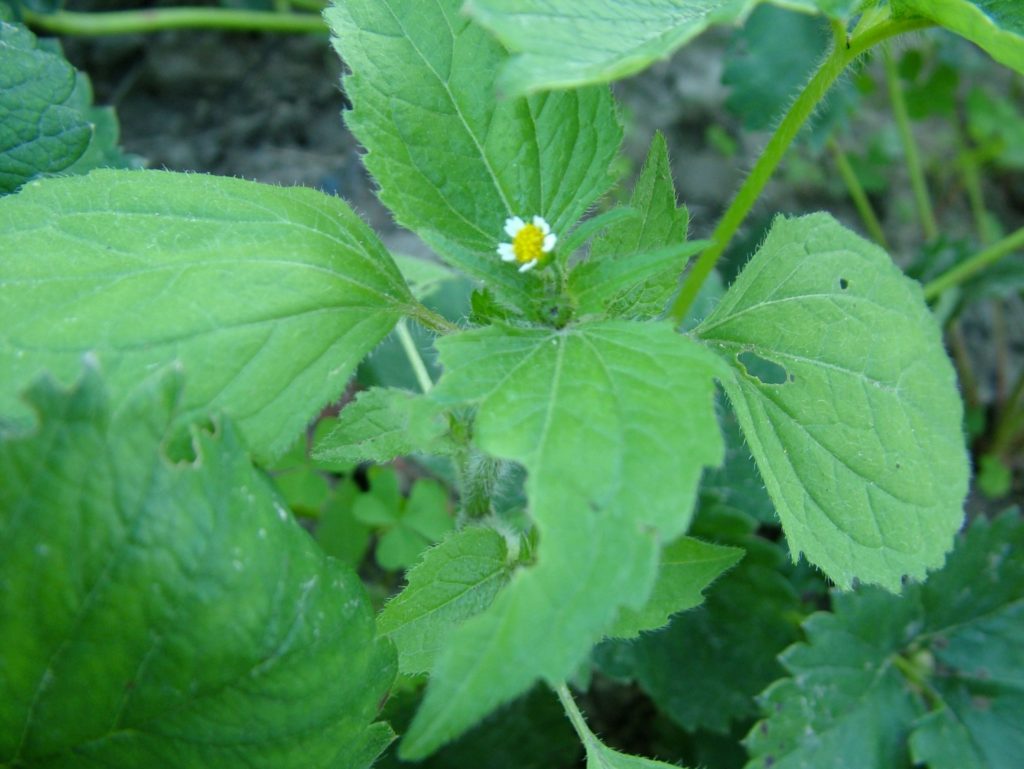Bed of Galinsoga
Galinsoga (galinsoga parviflora) is often called gallant soldier, and also quickweed, or potato weed, or by many other common names. It’s native to South America and was brought to Europe, where it’s now pervasive, in the 1700’’s. Its presence in North America may either be up from Mexico or brought back from Europe.
Galinsoga is named after the botanist and physician to the Queen of Spain, Ignacio Mariano Martinez de Galinsoga, who is also remembered for demonstrating scientifically that ladies’ corsets are unhealthy to the wearer.
Quickweed – Galinsoga – Gallant Soldier
Galinsoga is widely used around the world as both a culinary and a medicinal plant, but it is mostly only loathed by farmers and gardeners in the U.S. References from the agricultural universities and many mainstream articles are mainly hate mail explaining why galinsoga should not be allowed to exist. The articles are nearly all about control. The weed gives larger organic growers problems because it can be very difficult to control without intensive hand weeding or chemical intervention.
However, galinsoga is now sharing a growing Interest to foragers, home gardeners, and small food growers. You can find lots of internet references with uses and recipes.
My unorthodox approach to encouraging galinsoga in the garden is based on an assumption that I’m going to have weeds no matter what. I have a lot of open soil and weeds are going to sprout. I could do more mulching and implement other controls, but I’ve got hand weeding down pat. For me, it’s the easier approach. So, if I can influence which weeds I have to deal with, I’ll take galinsoga over any other. Galinsoga is about the easiest weed in the garden to pull by hand or to control with hand hoeing. Seedlings and smaller plants are easily scaped off with a hoe. Larger plants and their roots are easily pulled from all but the toughest soils. Even very large plants can usually be pulled without difficulty.
I encourage the growth and re-seeding of galinsoga and deal with the outcome. It is too easy to grow. Its self-seeding ability is scary and it will put out several generations through the growing season. It’s known as quickweed for a reason. A single plant takes up a lot of space as it matures, so the plant crowds out other weeds, although it’s not 100% effective, as grasses and dandelions are eager to try to co-exist below a galinsoga cover.
Once in your garden, galinsoga is almost always present, but frost quickly kills this tropical annual. It puts out a huge volume of green material, so I find it a great plant for my compost pile (you will not read this in any other article about galinsoga or compost). I’m not particularly encouraging others to follow my galinsoga example, but it works for me.
Now I’m going to have to try to eat it.



I agree, its truly one of the easiest weeds to pull when mature and it does a great job of crowding other weeds too!
Please enter my name in your drawing. Have a great vacation!!
I feed my pigs 2-3 tractor buckets of Gali dogs ever day. They love it. This summer I have lost my cobrahead. Can’t garden without. Best tool on the market. Please enter my name in your drawing. Lots of blessings.
More information on what we can do with this plant. Like cooking etc.
I don’t have enough experience with the medicinal and cooking uses of galinsoga, but one that intrigued me most was that it will relieve nettle sting. I don’t discourage nettle, so there’s a lot of that around the perimeters of the garden. I suggest you search the Internet. I’m sure you’ll find lots of information.
Love cobra head. Can’t garden without it. Please enter my name in your raffle. Thanks:)
I love my handheld forehead and have given several as gifts. Now I need to venture out and try the other models.. Please enter me in the drawings. Have a great vacation!